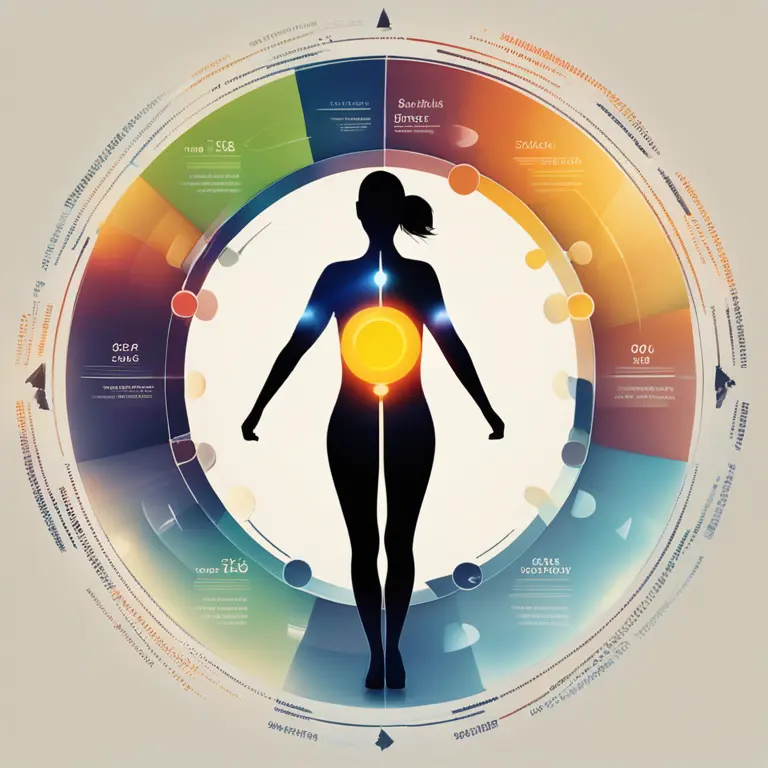
The Rhythms of Life: Understanding Human Biorhythm Cycles
Delve into the concept of human biorhythm cycles, the invisible rhythms that influence our physical, emotional, and intellectual states day by day.
article by Adrian Wallace
Introduction to Biorhythms
Human existence is marked by various cycles, from the rotations of the planets to the ebb and flow of the tides. Among these patterns, the concept of biorhythms presents a fascinating layer to our understanding of the human body and mind. Biorhythms are said to be the invisible life cycles that govern our physical, emotional, and intellectual faculties. The theory of biorhythms, which emerged in the late 19th century, posits that from the moment we take our first breath, we begin to oscillate within these rhythmic patterns, thereby affecting our day-to-day capabilities and moods.

Physical Biorhythm Cycle
The physical biorhythm cycle, with a span of 23 days, is believed to influence our strength, stamina, and overall vitality. During the positive phase of this cycle, one might feel energized and robust, finding it easier to partake in physical activities. Conversely, the negative phase may be characterized by a feeling of lethargy or decreased physical performance. It's important for individuals to be aware of this cycle to better plan activities that require physical exertion, like exercise or engaging in sports.

Emotional Biorhythm Cycle
Slightly longer, the emotional biorhythm cycle runs over a period of 28 days, paralleling the lunar month. This cycle is thought to influence our mood, creativity, and emotional stability. When this cycle is in a high phase, individuals may experience heightened emotional awareness, empathy, and a sense of harmony. On the flip side, the low phase might bring about feelings of emotional instability or a sense of being out of touch with one's feelings, suggesting a time for introspection or rest.
Intellectual Biorhythm Cycle
The third primary cycle, the intellectual biorhythm, spans a 33-day period and governs our mental sharpness, analytical abilities, and decision-making skills. When we are in the positive phase of the intellectual cycle, mental tasks may seem easier, and cognitive functions are said to be at their peak. The negative phase may result in a mental fog or hindered problem-solving skills, at which time it may be best to avoid making consequential decisions or tackling complex intellectual challenges.
Biorhythm Compatibility and Predictions for 2024
Proponents of biorhythms assert these cycles can also play a role in interpersonal relationships and compatibility. For instance, awareness of one's own cycles and those of others can potentially enhance interactions. Looking ahead to 2024, these rhythmic patterns could be considered in planning significant life events, whether personal or professional. Astrological forecasts for the year suggest a time of embracing change and harnessing individual strengths, aligning well with the understanding and utilization of one's biorhythms.
Tracking Your Biorhythm
With advances in technology, tracking one's biorhythm has become more accessible through various applications and online platforms. By inputting simple details such as your birth date, these tools can provide a visual representation of your cycles. Such technology makes it easier to anticipate the ebbs and flows of one's energy, emotional state, and intellect, potentially leading to a more harmonious and optimized lifestyle. As we move further into the digital age, the integration of biorhythms in personal health and wellness regimes may become increasingly prevalent.
Published: 1/30/2024
Modified: 1/30/2024
More predictions
Come back here soon to learn more about yourself and your future


The Art of Biorhythm Reading: Embrace Your Cycles
Delve into the fascinating world of biorhythm reading to align with your natural life cycles for improved well-being and foresight.


The Biorhythm Phenomenon: A Scientific Inquiry
Is biorhythm truly a scientific concept? Dive into the details of this intriguing theory and discover the extent of its scientific foundations.


The Rhythms Within: A Guide to Understanding Biorhythms
Delve into the concept of biorhythms to comprehend the cycles that influence our physical, emotional, and intellectual states.